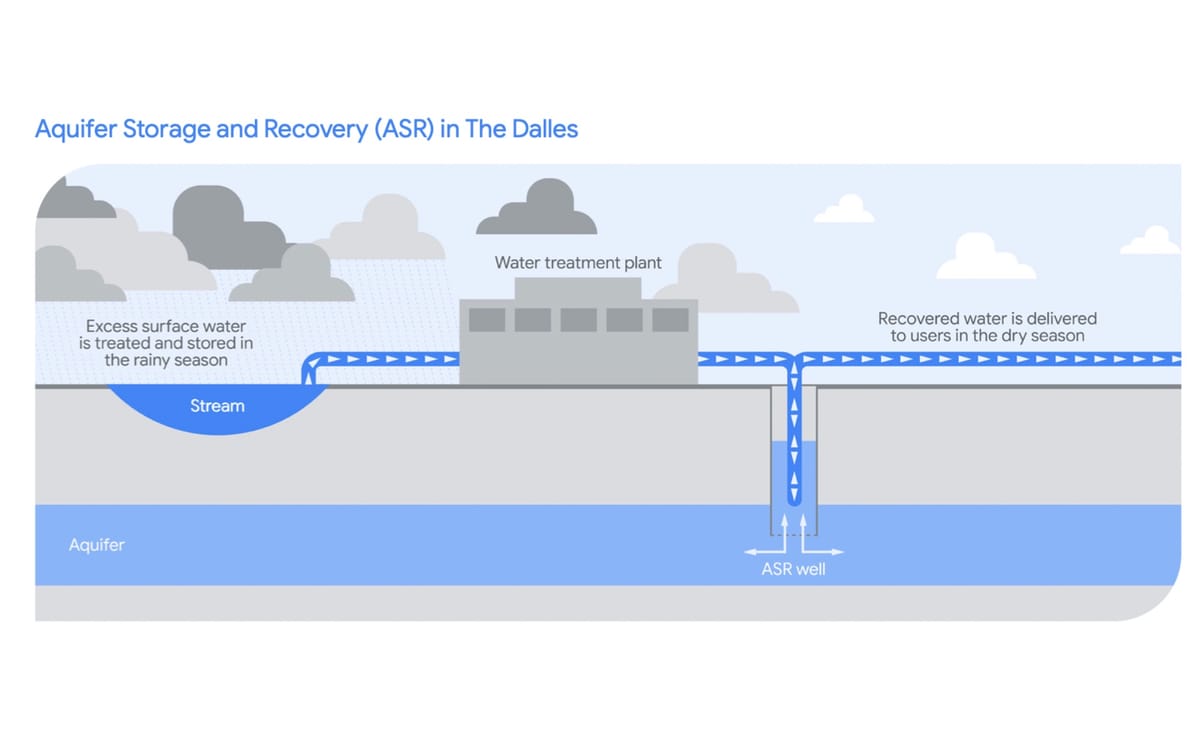Report on Water Quality Management at Chilmark School in Relation to Sustainable Development Goals
Executive Summary
Chilmark School has ceased the use of its drinking water following the detection of per- and polyfluoroalkyl substances (PFAS). As an immediate precautionary measure, the school has transitioned to providing bottled water for students and staff. Concurrently, officials are proceeding with plans to install a permanent water filtration system. This response directly addresses and supports several key United Nations Sustainable Development Goals (SDGs), focusing on health, water quality, and the creation of sustainable and safe community environments.
Health and Water Safety Initiatives (SDG 3 & SDG 6)
The school committee’s decision was a proactive measure to safeguard the health of its community, aligning with core principles of SDG 3 (Good Health and Well-being) and SDG 6 (Clean Water and Sanitation).
- Commitment to Good Health and Well-being (SDG 3): Although PFAS levels did not exceed the state’s official threshold for concern, a gradual increase in contamination was observed. Recognizing the linkage between PFAS and adverse health effects, including cancer risks, the committee acted preemptively to protect the vulnerable student population.
- Ensuring Clean Water and Sanitation (SDG 6): The primary action addresses the fundamental right to safe drinking water. By blocking access to contaminated water fountains and securing an alternative water source, the school is upholding its responsibility to provide clean water. All food is prepared off-site at West Tisbury School, ensuring the integrity of the food supply.
- Long-Term Water Security: The ultimate goal is the installation of a filtration system, which represents a sustainable, long-term investment in water infrastructure to guarantee safe water access for the future.
Implementation of a Sustainable Water Infrastructure (SDG 6 & SDG 11)
The process of establishing a permanent solution involves a multi-step technical and regulatory procedure, reflecting the challenges in building resilient infrastructure as outlined in SDG 11 (Sustainable Cities and Communities).
- Technology Selection: The proposed method for PFAS removal is a granular activated carbon filtration system, a standard treatment for this type of contaminant.
- Regulatory Permitting: To proceed, the school must obtain a “BRP 34 chemical addition retrofit” permit from the state Department of Environmental Protection (DEP). This requires a formal application prepared by a professional engineer.
- Application Process: A professional has been engaged to prepare and submit the permit application to the state.
- Projected Timeline: The permitting and installation process is expected to take several months, with a potential completion by the beginning of the following school year.
Broader Community Context and Future Strategy (SDG 11 & SDG 12)
The situation at Chilmark School is indicative of a wider environmental challenge, highlighting the need for community-wide strategies and a focus on responsible consumption.
- Sustainable Community Planning (SDG 11): PFAS contamination is a known issue on the Island, with traces previously found near the West Tisbury landfill and the airport. The school’s action is part of a larger community effort to manage environmental hazards and ensure the safety of public facilities.
- Responsible Consumption and Production (SDG 12): The presence of these “forever chemicals,” which originate from products like waterproof clothing and nonstick kitchenware, underscores the global challenge of unsustainable production and consumption patterns.
- Future Investment and Collaboration: The school committee has been urged to budget for a future engineering study to ensure long-term well safety. Furthermore, the Chilmark Preschool, which shares the well, is collaborating on the design of a sufficient filtration system for its new building, demonstrating a coordinated community approach.
Conclusion: Fostering a Safe and Sustainable Learning Environment (SDG 4)
The decisive actions taken by the Chilmark School administration and committee affirm that a safe and healthy physical environment is a non-negotiable prerequisite for Quality Education (SDG 4). By prioritizing student and staff well-being in response to an environmental threat, the school not only protects its immediate community but also models responsible stewardship, directly contributing to the advancement of global sustainability goals.
Analysis of Sustainable Development Goals in the Article
1. Which SDGs are addressed or connected to the issues highlighted in the article?
-
SDG 3: Good Health and Well-being
The article’s central theme is the protection of human health from contaminated drinking water. The discovery of PFAS, which are “linked to negative health effects, including increased risk of certain cancers and fluctuations in liver enzyme levels,” directly threatens the well-being of students and staff. The school committee’s precautionary actions are driven by concern for the health of children, as one member states, “My concern is for the children… We don’t know what the impact of these specific levels are on young bodies and young children.”
-
SDG 6: Clean Water and Sanitation
This goal is directly addressed as the article focuses on the quality and safety of the school’s drinking water supply. The contamination of the school well with PFAS compromises the provision of clean water. The response, which includes switching to bottled water and planning the installation of a “granular activated carbon” filtration system, are direct efforts to ensure access to safe water and improve water quality management.
-
SDG 4: Quality Education
The issue takes place within an educational facility, impacting the learning environment. A fundamental component of quality education is a safe and healthy environment for students. The contaminated water poses a direct threat to this safety. The principal’s statement, “Students and staff’s health and safety are our number one priority,” underscores that ensuring a safe physical environment is a prerequisite for effective education.
-
SDG 12: Responsible Consumption and Production
The article implicitly connects to this SDG by identifying the source of the contamination as PFAS, or “forever chemicals,” which “can be found in waterproof clothing, firefighting foams and nonstick kitchenware.” This points to broader patterns of production and consumption that lead to the release of persistent, hazardous chemicals into the environment, ultimately contaminating water sources.
2. What specific targets under those SDGs can be identified based on the article’s content?
-
Target 3.9
“By 2030, substantially reduce the number of deaths and illnesses from hazardous chemicals and air, water and soil pollution and contamination.”
The article directly addresses this target by describing the school’s proactive measures to prevent potential illnesses caused by the hazardous PFAS chemicals found in their water supply. The decision to stop using the well water and install a filtration system is a direct action to mitigate health risks from water contamination. -
Target 6.1
“By 2030, achieve universal and equitable access to safe and affordable drinking water for all.”
The situation at Chilmark School highlights a localized failure to provide safe drinking water. The immediate switch to bottled water and the long-term plan for a filtration system are efforts to restore access to safe drinking water for the school community, in line with this target. -
Target 6.3
“By 2030, improve water quality by reducing pollution… and minimizing release of hazardous chemicals and materials.”
The presence of PFAS is a form of chemical pollution in the school’s well. The plan to install a filtration system is a direct measure to improve water quality by removing these hazardous chemicals at the point of use. -
Target 4.a
“Build and upgrade education facilities that are child, disability and gender sensitive and provide safe, non-violent, inclusive and effective learning environments for all.”
The article’s focus on ensuring the school’s water is free from harmful chemicals is an effort to maintain a safe learning environment. Upgrading the school’s water system with a filtration unit is a tangible action toward improving the safety of the educational facility. -
Target 12.4
“By 2020, achieve the environmentally sound management of chemicals and all wastes throughout their life cycle… and significantly reduce their release to air, water and soil in order to minimize their adverse impacts on human health and the environment.”
The contamination of the school’s well is a consequence of the release of PFAS into the environment. The article highlights a localized impact of the failure to achieve sound management of these chemicals, reinforcing the importance of this target.
3. Are there any indicators mentioned or implied in the article that can be used to measure progress towards the identified targets?
-
Implied Indicator for Targets 3.9 and 6.3
The concentration of PFAS in the water supply. The article mentions that tests have found “low levels” of PFAS and that officials are noticing a “gradual increase.” The measurement of these chemicals, likely in “parts per trillion” as referenced by the state standard, serves as a direct indicator of water quality and the level of chemical contamination. Reducing this concentration to non-detectable levels would measure progress.
-
Implied Indicator for Target 6.1
The proportion of the school population with access to safely managed drinking water. Currently, this proportion is zero from the primary well source, as the school has resorted to bottled water. The successful installation and operation of a filtration system that removes PFAS would restore this proportion to 100%, indicating that the school population is again using a safely managed drinking water service.
-
Implied Indicator for Target 4.a
The existence of basic and safe drinking water infrastructure. The article discusses the need to “install a filtration system.” The successful permitting, installation, and operation of this system serves as an indicator that the school has upgraded its facilities to provide a safe learning environment, specifically concerning access to safe drinking water.
4. Summary Table of SDGs, Targets, and Indicators
| SDGs | Targets | Indicators (Mentioned or Implied in the Article) |
|---|---|---|
| SDG 3: Good Health and Well-being | Target 3.9: Substantially reduce illnesses from hazardous chemicals and water pollution. | The measured concentration of PFAS in the school’s well water (e.g., parts per trillion). |
| SDG 6: Clean Water and Sanitation | Target 6.1: Achieve universal and equitable access to safe drinking water. | The provision of a safe water source (bottled water as a temporary measure, a filtered well as a permanent one) for 100% of the school community. |
| Target 6.3: Improve water quality by reducing pollution and minimizing hazardous chemicals. | Test results showing the reduction or elimination of PFAS levels in the water after the installation of a filtration system. | |
| SDG 4: Quality Education | Target 4.a: Build and upgrade education facilities to provide safe learning environments. | The installation and operational status of a water filtration system to ensure the school’s infrastructure provides safe drinking water. |
| SDG 12: Responsible Consumption and Production | Target 12.4: Achieve the environmentally sound management of chemicals to minimize their release to water and soil. | The presence of PFAS in the well water serves as a negative indicator of sound chemical management in the wider environment. |
Source: vineyardgazette.com







